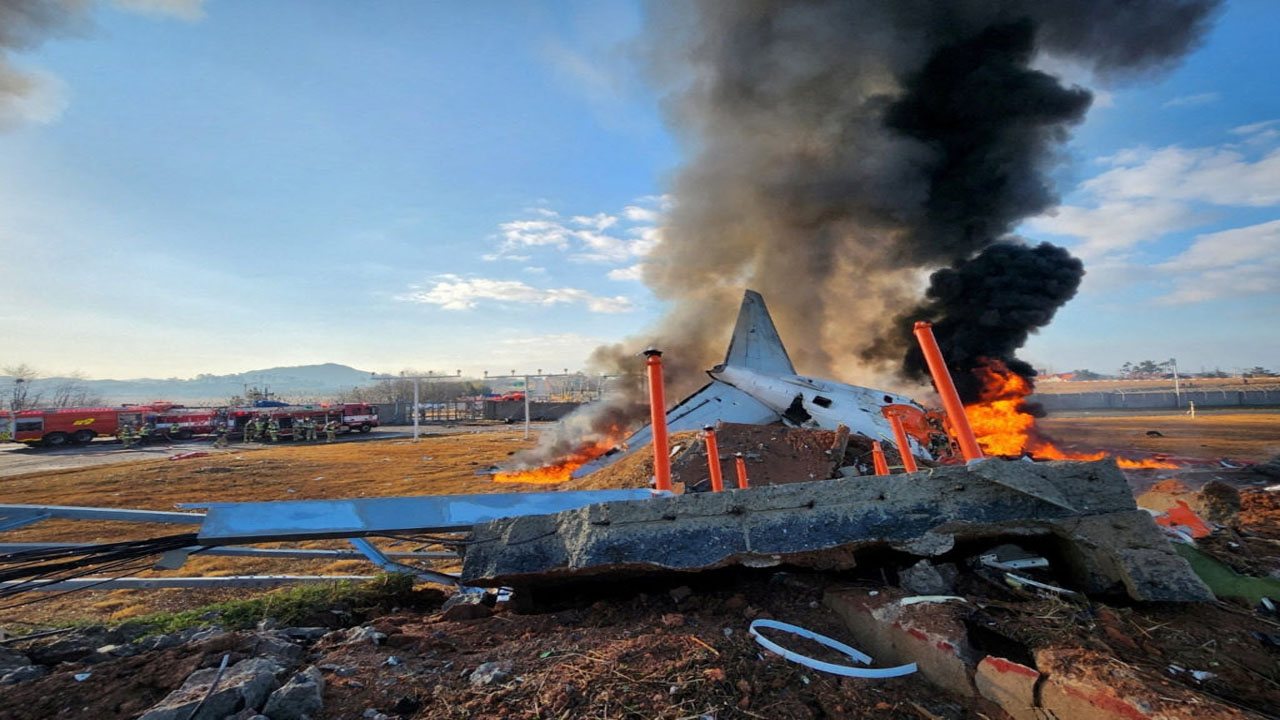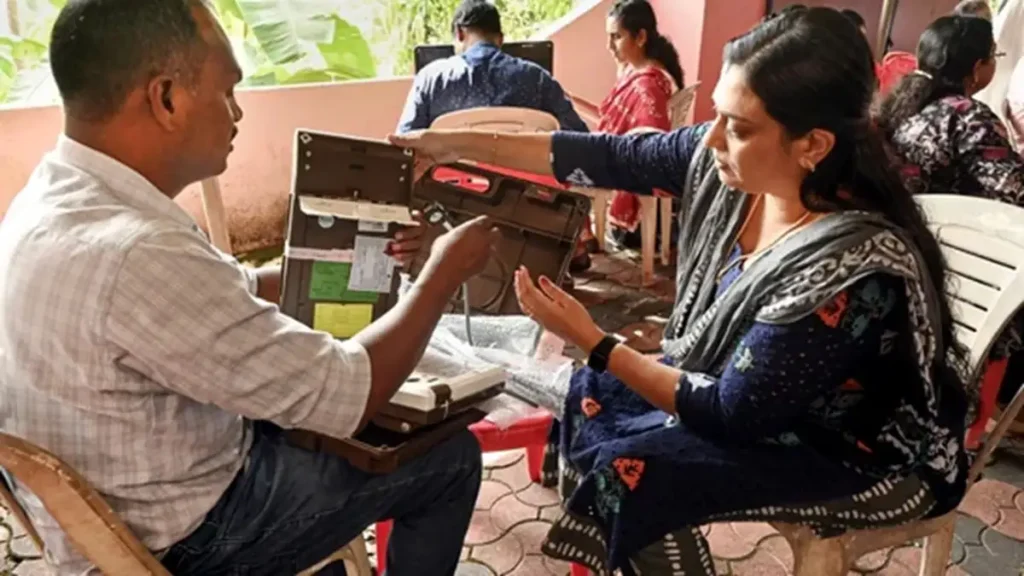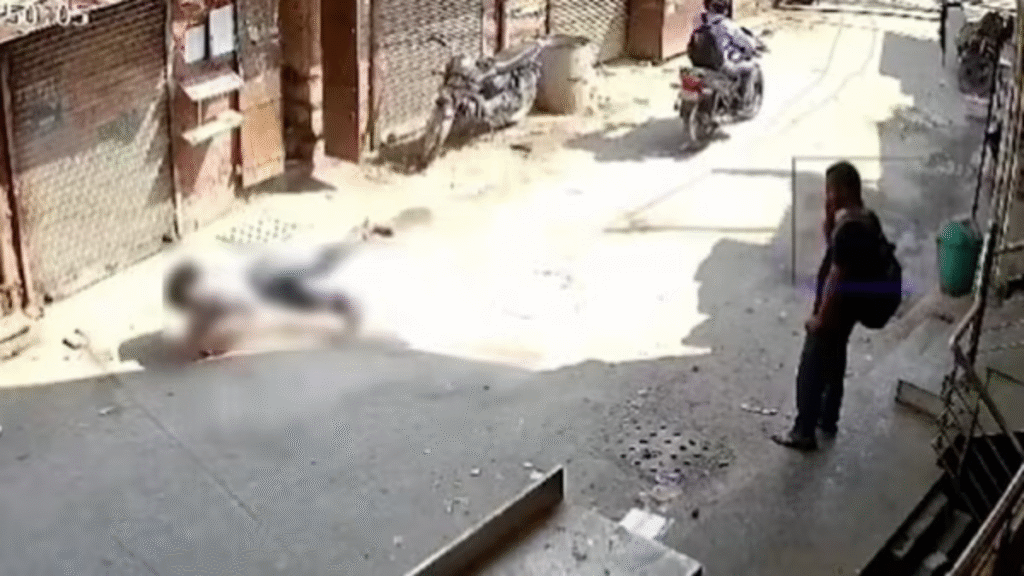Now Reading: Tragedy in the Air: Bird Strike and Go-Around Preceded Fatal Jeju Air Crash
-
01
Tragedy in the Air: Bird Strike and Go-Around Preceded Fatal Jeju Air Crash
Tragedy in the Air: Bird Strike and Go-Around Preceded Fatal Jeju Air Crash

A pall of grief hangs over South Korea following the tragic crash of Jeju Air Flight 7C2216 at Muan International Airport on Sunday morning. The flight, originating from Bangkok, Thailand, met with disaster during landing, claiming the lives of 179 of the 181 people on board. Harrowing details have emerged about the final minutes of the flight, revealing a bird strike and a subsequent go-around attempt just moments before the crash. This article delves into the unfolding details of the incident, examining the possible factors that contributed to this devastating event.
A Routine Flight Turns Tragic
Jeju Air Flight 7C2216 departed from Bangkok’s Suvarnabhumi Airport around 9:00 am (0000 GMT) on Sunday, carrying 175 passengers and six crew members. The flight proceeded normally until its approach to Muan International Airport in South Korea. According to reports from South Korea’s transport ministry and fire authorities, air traffic control at Muan Airport alerted the aircraft to a potential bird strike during its initial landing attempt at approximately 8:54 am KST (GMT+9).
The Fatal Go-Around
In response to the bird strike warning, the pilots initiated a go-around, a standard procedure in which an aircraft aborts its landing and circles around to attempt another approach. This decision, while routine in the face of potential hazards on the runway, would ultimately precede the tragic events that followed.
Eyewitness accounts and footage of the incident reveal the aircraft attempting a belly landing, with its landing gear still retracted. The plane skidded along the runway, trailing smoke, before crashing into a wall at the end and bursting into flames. The impact and ensuing fire resulted in the deaths of all but two of the crew members on board.
Possible Factors Under Investigation
While the bird strike and subsequent go-around are confirmed events leading up to the crash, the exact sequence of events and contributing factors are still under investigation. Authorities are exploring several possibilities, including:
- The extent of the bird strike’s impact: Investigators are working to determine whether the bird strike caused significant damage to the aircraft, potentially affecting its control systems or landing gear.
- Challenges during the go-around: Executing a go-around can be a complex maneuver, especially in challenging weather conditions or if the aircraft has sustained damage. Investigators will be examining the flight’s trajectory and the pilots’ actions during this phase.
- Weather conditions: While initial reports suggest relatively clear weather, investigators will be reviewing meteorological data to rule out any adverse weather conditions that may have played a role.
- Mechanical failure: Although less likely given the bird strike incident, investigators will also be examining the aircraft’s maintenance records and technical logs to rule out any pre-existing mechanical issues.
A Nation in Mourning
The crash of Jeju Air Flight 7C2216 is the deadliest plane crash in South Korean history, surpassing the 1997 Korean Air crash in Guam, which claimed over 200 lives. The nation is in mourning as families grieve the loss of their loved ones.
The two survivors, both flight attendants, have been rescued from the wreckage and are receiving medical treatment in Seoul. Their accounts may provide crucial insights into the final moments of the flight and the circumstances leading to the crash.
The Importance of Thorough Investigation
As the investigation unfolds, it is crucial to avoid speculation and allow the authorities to conduct a thorough and impartial examination of all the evidence. The findings of this investigation will be vital in understanding the precise causes of the crash and implementing measures to prevent similar tragedies in the future.
The aviation industry has made significant strides in safety over the years, but incidents like this serve as a stark reminder of the inherent risks of air travel. A comprehensive investigation, coupled with a commitment to learning from past mistakes, is essential to ensuring the continued safety of air travel for all.
Final Thought
The crash of Jeju Air Flight 7C2216 is a devastating tragedy that has deeply affected South Korea and the global aviation community. The confirmed bird strike and subsequent go-around add a critical layer to the narrative of the flight’s final moments. As investigators delve deeper into the circumstances surrounding the crash, the world awaits answers that may help prevent similar tragedies from occurring again. In the meantime, our thoughts and prayers are with the families and loved ones of those who perished in this heartbreaking incident1










